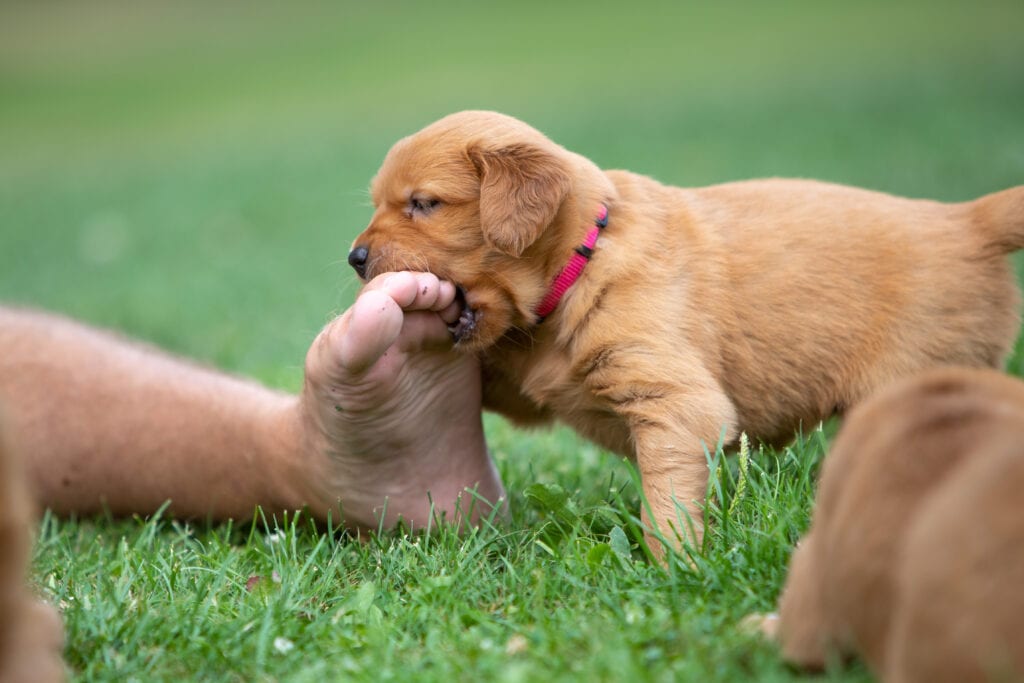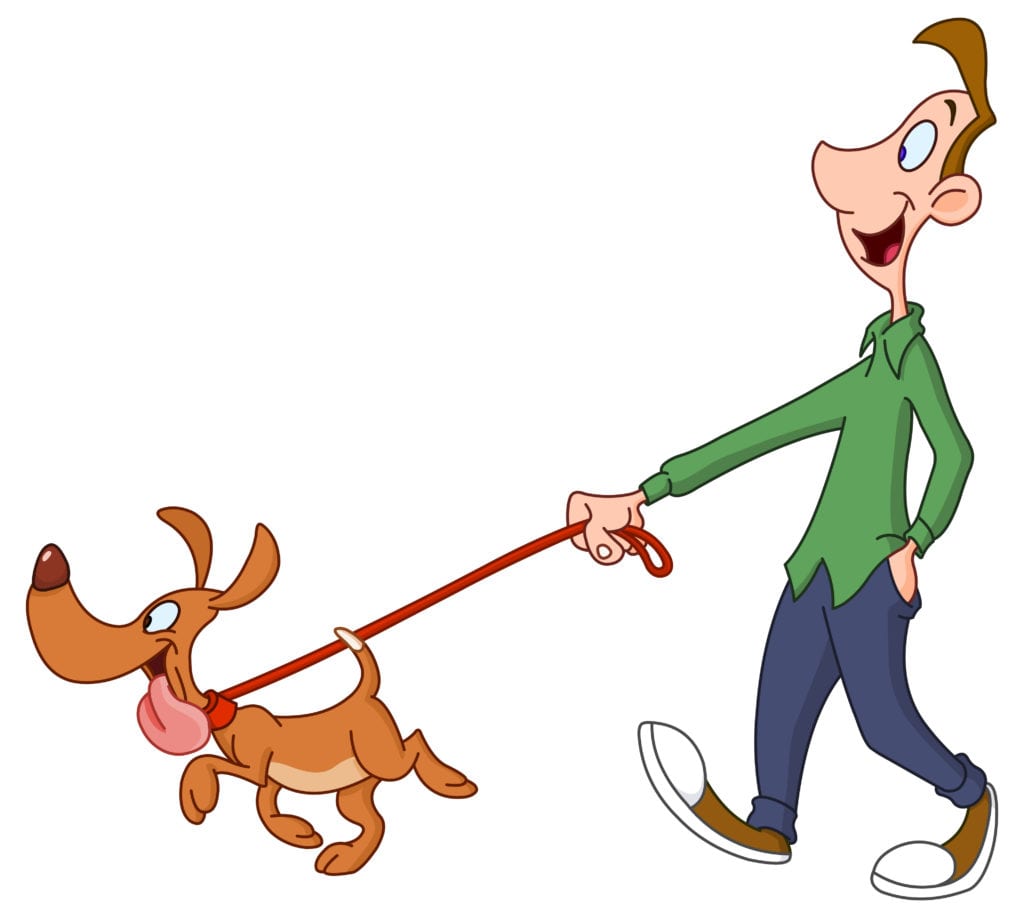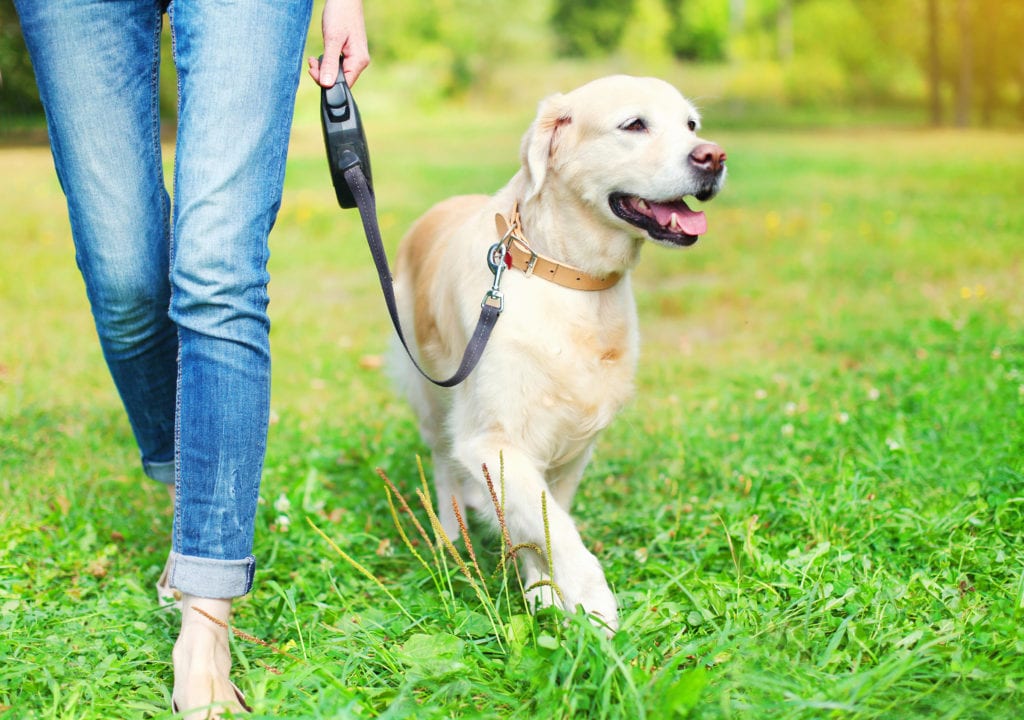A Step By Step Guide
A consistent routine in a controlled environment is the key to house breaking a puppy.
Lost Creek Doodles
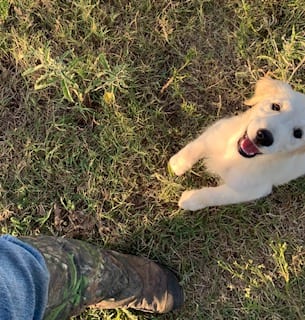
Your new puppy is home now, and you’re wondering where to begin. Where’s she going to go to the bathroom? How does she learn the right place and all the wrong places? Is crate training the answer?
House breaking a puppy can be clean, fast and easy if you do it right. Crate training is the method that we’ve used with success for many years, with many different dog breeds. And if you’re reading this, it probably means you have a Doodle, and they’re one of the smartest breeds there is! They learn quickly!

It’s very important you control as many variables as possible while crate training your puppy. The first couple weeks at home are critical and what we’re suggesting might seem too strict. You might not like it because you want the pup to stay out and play all the time…or sleep in your bed. But if you’re willing to sacrifice for a few weeks, you’ll enjoy a well trained pet for many years without worrying about accidents in the house.
Crate training – how we do it…
This is a typical 24 hour period for us when we crate train a puppy. On average, we’d expect a puppy to be almost fully house broken after doing this routine for 2 weeks. This example is for a 4 month old puppy.
5:30a – Wake. We take the puppy outside IMMEDIATELY. She’s been holding it all night and she’ll be ready to go. We stay with her and watch until she pees and poops. I know. It’s early. But, she’s just a puppy, and as she gets older she’ll be able to sleep in with her human.
We praise her each time she has success and give her a loving pat on the head. (Some choose to reward with snacks. That’s fine. However, we prefer our dogs to learn to love a simple pat on the head and word of praise. And, since we’re trying to be very strict regarding food intake, we limit treats during crate training.)
5:45a – Play time! We let the puppy have supervised play time in a controlled area for 1-2 hours. This might be time with other animals, or it may be time you spend with the pup before you go to work.
7:45a – Play time is over. We bring the pup back inside to eat. We break the recommended daily food intake into two meals. It’s usually about a half cup of puppy food to start. Pay careful attention and use only the right kind food and correct amounts!
8:00a – One more time outside to potty. With a full belly, she may feel the need to use the bathroom again due to pressure on the bladder. We watch until she goes, then carry her back to her crate. Be sure to praise her successes!
8:15a Alone time in the crate. Time for her to rest and reflect on her morning accomplishments!
1:30p – We carry the puppy straight out to the place to potty. Don’t let the pup walk out! She may decide she needs to pee too bad to wait! Again, watch her until she pees and poops, and praise her victories with a kind voice and soft pat on the head.
1:45p – Play time! We give her another 1-2 hours of supervised play time, then back in the crate.
NOTE – It’s important you get your puppy back to the crate BEFORE she has an accident! (Assuming you’re giving her free time in an undesirable location for pottying.)
3:45p – Play time over. You can either take her out once more to potty, or take her straight to the crate. Just remember, there are limits to how long she can hold it, so plan accordingly!
5:45p – We take the pup from the crate directly to the place she needs to potty. Carry her, don’t let her walk. Praise her success!
6:00p – Play time! After she potties, we give her another 1-2 hours of supervised play time. At some point during this time slot we’ll feed again. We prefer to feed early so they’re less likely to have a full stomach all night. Either way you do it, make sure you take her out again IMMEDIATELY after she eats.
8:00p – Bedtime, after she’s eaten and of course pottied.
Midnight – Someone gets up to take puppy out to potty. Watch to make sure she goes and praise her again.
5:30a – Start all over again!
A few things to remember…
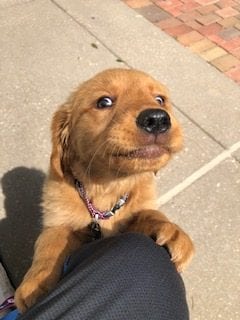
- How many hours can a puppy “hold it”? The general rule of thumb for puppies is their age in months, plus 1. Our experience is that most pups can hold it a little longer, however. But keep this rule in mind.
- Do you have to take the puppy out in the middle of the night? A puppy learns where TO potty more than where NOT to potty. The more often you can take her out and take advantage of a full bladder, the better. Also, you want to avoid accidents inside the crate which can set training back substantially.
- Feed your pup at the same time every morning and evening. Schedule what goes in and you’ll soon learn the schedule for what comes out!
- DO NOT free-feed your dog for the first two years of life. Over feeding is one of the WORST things you can do to a puppy, especially a large breed dog. Most puppies will gorge if you leave food out. Don’t do this. Always have water accessible, however.
- I can’t stress enough the importance of getting your puppy back into the crate BEFORE she has an accident. When in doubt, cut the play time short.

Lastly…
Crate training your puppy will use her natural instincts to your advantage. It teaches her to hold it while in the crate (her den) until she gets outside. In the process, she potties in the same area consistently, therefore learning where you want her to potty. Once she learns the acceptable location, the crate will no longer be needed. (But it is still a very useful tool!)
Remember to control her food intake. Inconsistency in the time she eats or amount she eats will interfere with the program. It’s important that you not overfeed your pup and avoid all table scraps for the first two years. (Click here for more information on this subject.)
A consistent routine in a controlled environment is the key to house breaking a puppy. Some things are out of your control when working with your pet, but this program will help you accomplish your goals with far less frustration.
Good luck!
Feel free to reply with comments or questions.
